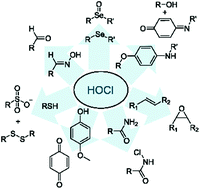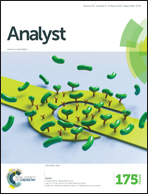Recent progress in chromogenic and fluorogenic chemosensors for hypochlorous acid
Abstract
Due to the biological and industrial importance of hypochlorous acid, the development of optical probes for HOCl has been an active research area. Hypochlorous acid and hypochlorite can oxidize electron-rich analytes with accompanying changes in molecular sensor spectroscopic profiles. Probes for such processes may monitor HOCl levels in the environment or in an organism and via bio-labeling or bioimaging techniques. This review summarizes recent developments in the area of chromogenic and fluorogenic chemosensors for HOCl.


 Please wait while we load your content...
Please wait while we load your content...